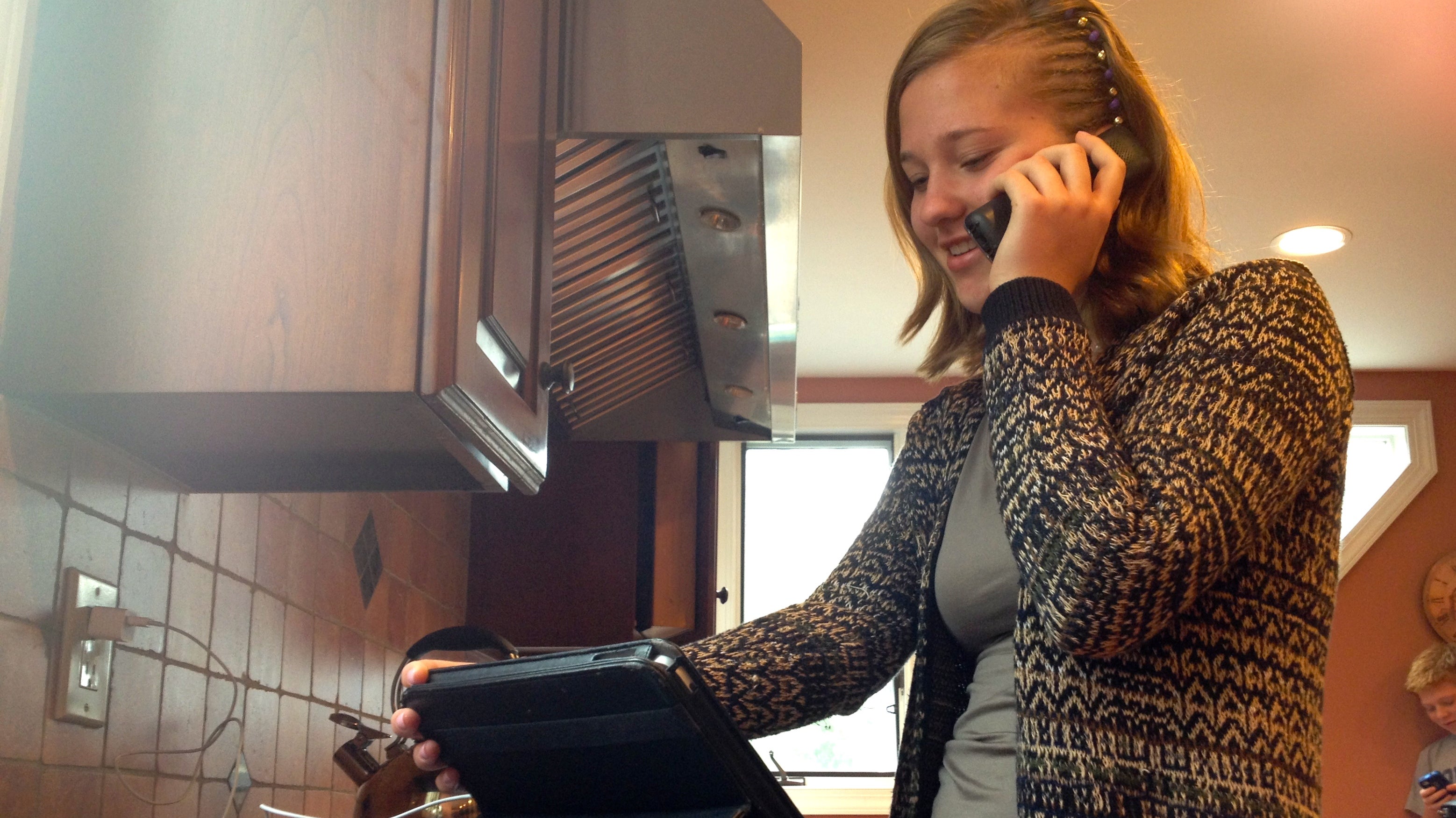On the case of hospital-bill transparency: a 9th-grader from Haverford
Listen
Jill Bernstein at her home in Haverford, Pa. (Zack Seward/WHYY)
On The Pulse, we’ve been exploring the strange world of medical billing. So has a local teen.
A few weeks ago on The Pulse, we explored the strange world of medical billing. (For a quick audio refresher, click the Soundcloud player below.)
In the full story, we spoke with two groups trying to demystify the medical billing process. But we missed someone: a 14-year-old girl from Haverford, Pa., who was recently published in the Journal of the American Medical Association’s (JAMA) Internal Medicine edition.
“It’s a big deal now, but not then, I wasn’t really thinking about it,” said ninth-grade student Jill Bernstein.
Bernstein called 20 hospitals in the Philadelphia area and asked for some prices: One for parking; the other for a simple electrocardiogram.
“I thought that it was just going to be straight-forward,” Bernstein said. “It was much more of, ‘Oh, let me check, uh,’ kind of keeping you on the line but still after maybe 10 minutes on the phone they weren’t able to give you a price.”
While 19 of 20 hospitals could quote parking rates, only three could say how much an EKG cost.
“And how different they were in price,” said Bernstein. “I think that was probably the most shocking out of the research project.”
Prices ranged from $137 to $600 to $1,200, depending on the hospital.
A previous study, cited by Bernstein in her paper, did a similar exercise for hip replacements. Bernstein picked EKGs because they are more generic — and presumably easier to price out.
“Even the hospitals that weren’t able to give a price for an EKG, were able to give a price for parking,” said Bernstein.
Or, as she writes in JAMA Internal Medicine:
Hospitals seem able to provide prices when they want to; yet for even basic medical services, prices remain opaque. Accordingly, medical insurance payment schemes that promote concern about prices without a commensurate increase in price transparency are apt to be ineffective.
You can read the two-page article, co-authored with her dad (a doctor at Penn’s Perelman School of Medicine), by clicking here (PDF).
WHYY is your source for fact-based, in-depth journalism and information. As a nonprofit organization, we rely on financial support from readers like you. Please give today.



